Project start: 01.01.2020
Project end: 31.12.2022
Herta Firnberg Project, project number T-1136
Project goal:
The goal of this project is to investigate metal idiophones, their function and their acoustic influence on the daily life
of people in Central Europe from 800 BC to 800 AD. The project brings together institutions from several different countries
and follows an interdisciplinary approach. The sounds created by the objects generate acoustic fields, thereby influencing
people’s acoustic environment and thus their listening habits. This interdisciplinary project contributes to research into
music, musical listening habits, identity through sounds and the role of acoustic signals in regulating daily life in prehistoric
and early history communities. One aspect of the research looks at the influence of sounds on health. It is the first time
that sound objects discovered by archaeologists are not only interpreted, dated, examined for their geographical distribution
and analysed from a tonal perspective but also serve as the basis for looking into the psychoacoustic parameters of their
sounds and their effect on the physical and mental health of humans.
The project uses metallic idiophones cast in bronze and forged from sheet iron: bells, jingles, costume jewellery, vessels
with rattling pendants, and hoops and rings (several would have been worn at the same time on the arms and legs).
Objects to be studied:
Excavations of the Iron Age burial site in Hallstatt have revealed jewellery and vessels with rattling pendants dating to
the Hallstatt period. The project will also analyse jingles from the Iron Age burial sites in Bofflens, Lyssach, Langenthal,
Valeyres-sous-Rances, Sion and Kernenried-Oberholz (all in Switzerland, Hallstatt period) as well as hoops and rings worn
on the arms and legs found in graves at Eislfeld/Dürrnberg (Austria, Hallstatt period & Latène period).
Objects from the Roman Imperial period include bells from the military camps, settlements and burial sites at Vindobona (Vienna),
Carnuntum (Petronell-Carnuntum), Ovilava (Wels), Iuvavum (Salzburg), Lentia (Linz), Adiuvense (Wallsee), Favianis (Mautern),
Comagenis (Tulln), Augustianis (Traismauer) and Mauerbach.
Early medieval bells and jingles from Avar cemeteries will be studied at ten sites in Austria, nine sites in Slovakia and
thirty-one sites in Hungary
Methods:
- Archaeology: analysis of objects in the collections, database, finding similar objects for comparison, classification according to type, analysis of archaeological context, chronological classification, inspection of written/iconographic sources from the respective periods
- Metallurgical and textile analyses: scanning electron microscopy, X-ray fluorescence analysis, DinoLite digital microscope, light microscope
- Acoustic analyses: sound recordings, analyses of basic spectral and temporal characteristics, sound level measurements, analyses of psychoacoustic parameters
- Experimental archaeology: reproducing selected objects in experiments
- Music ethnology: study of analogies from music etnology
- Psychological examination: Experience Sampling Methods (ESM)
Beispiele:
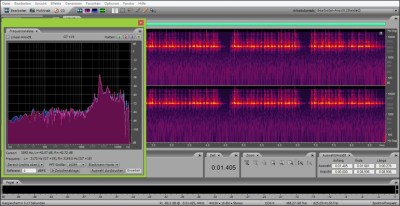
Frequency analysis of the bronze pellet bell from grave 715, late Avar period, Avar cemetery Vösendorf/Laxenburgerstraße
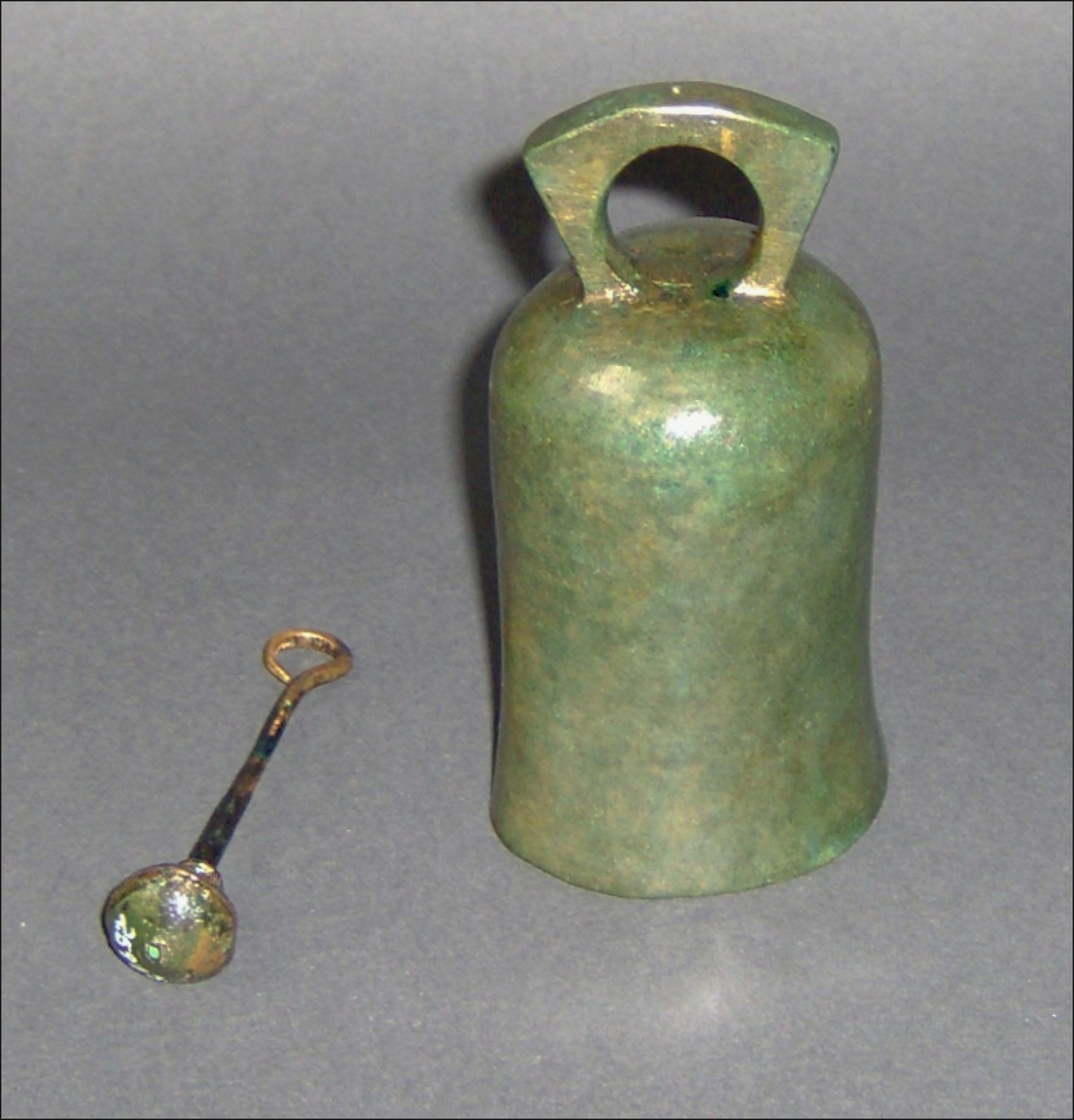
Roman bronze bell, Hallstatt period cemetery Hallstatt-Hochtal, discovered in grave 765
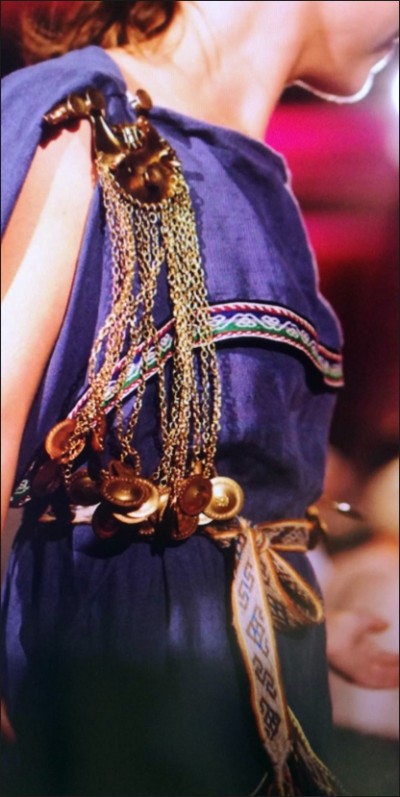
Fibula with rattling pendants, grave 505, Hallstatt period cemetery Hallstatt-Hochtal, replica
Projectmanagement & Projectpart Archaeology, Acoustics & Studying antique written and iconographic sources:
Mag. Dr. Beate Maria Pomberger (Naturhistorisches Museum Wien, Prähistorische Abteilung)Mail:
Projectpartners:
Supervision & Projectpart Textil:
Priv.-Doz. Mag. Dr. habil Karina Grömer (Natural History Museum Vienna, Prehistoric Departement)
Projectpart Psychoacoustic Analyses:
Mag. Dr. Jörg H. Mühlhans (MediLab Universität Wien)
Projectpart Metallurgy:
Ing. Mag. Dr. des. Mathias Mehofer (VIAS - Vienna Institute of Archaeological Science/University of Vienna)
Dr. Dan Topa (Natural History Museum Vienna/Central research laboratory)
Doc. Mgr. Ján Tirpák, CSc. (Univerzita Konštantína Filosofa v Nitre/Department of Gemology, Fakulta Prírodných Vied)
Bernadett Bajnóczi PhD (Hungarian Academy of Sciences/Institute for Geological and Geochemical Research - Research Centre for Astronomy and Earth Sciences)
Projectpart Psychological Studies:
Univ-Prof. Dr. Urs Markus Nater (University of Vienna/Institute of Applied Psychology: Health, Development, Enhancement and Intervention)
Projecpart Ethnomusicologial Analogies:
Univ.-Prof. Dr. Julio Mendivil, M.A. (University of Vienna/ Institute of Musicology)
Experimental Archaeology:
Mag. Michael Konrad (Danube University Krems/Academic Assistant Department for Arts and Cultural Studies)
Lukas Kerbler MA (University of Vienna/Institute of Prehistory and Historic Archaeology)
Collaboration of museums and collections in which the objects to be examined are kept:
a. Austria
Natural History Museum Vienna, Prehistoric DepartementOberösterreichisches Landesmuseum/Archäologie
Landessammlungen Niederösterreich/Archäologischer Park Carnuntum
Landessammlung Niederösterreich Urgeschichtsmuseum Asparn/Zaya MAMUZ
Heimatmuseum Mauerbach
Salzburg Museum GmbH Fachbereich Archäologie, Domgrabungsmuseum
Stadtmuseum Wels/Stadt Wels – Minoriten – Archäologische Sammlung
Keltenmuseum Hallein/Salzburgmuseen
Österreichisches Bundesdenkmalamt, Abteilung für Archäologie
Stadtarchäologie Wien
WienMuseum
Römermuseum Wallsee/Museumsverein Wallsee
b. Hungary
József Koszta Múzeum SzentesHansági Múzeum Mosonmagyarovár
Balaton Museum Keszthely
Rippl-Rónai Múzeum Kaposvár
Magyar Nemzeti Múzeum Budapest
Savaria Múzeum Szombathely
c. Slovakia
Podunajské múzeum v KomárneSlovakian Academy of Sciences Nitra/Institute of Archaeology
Slovenské národné múzeum Bratsilava /Archeologické múzeum
d. Switzerland
Bernisches Historisches MuseumArchäologischer Dienst Bern
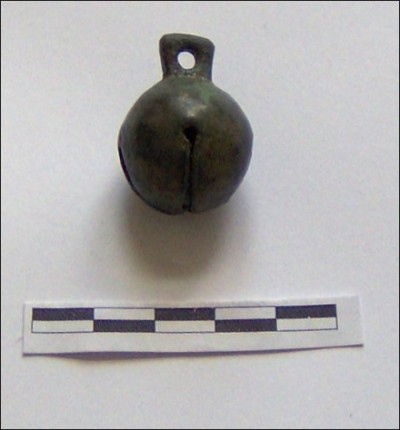
bronze pellet bell from grave 715, late Avar period, Avar cemetery Vösendorf/Laxenburgerstraße
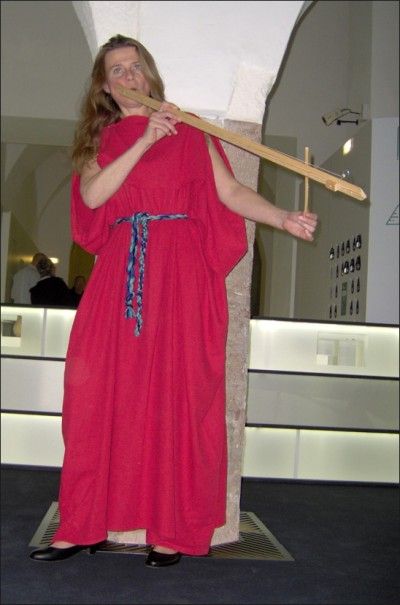
Beate Maria Pomberger, playing a musical bow

